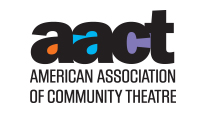Theatre Terms
 As a service to the theatre community, AACT provides over 1000 definitions of theatrical terms. Fully searchable, our glossary is helpful for technical staff, directors, actors, producers, or anyone wanting to better understand the inner workings of theatre.
As a service to the theatre community, AACT provides over 1000 definitions of theatrical terms. Fully searchable, our glossary is helpful for technical staff, directors, actors, producers, or anyone wanting to better understand the inner workings of theatre.
HOW TO SEARCH:
Click on a letter (A-Z) below to find terms beginning with the specified letter, OR enter a word in "Search for Term" OR search by entering a word in "Words in Definition." For example, entering the word "curtain" would display all words whose definition includes that word. (Note: If the A-Z or word search has been activated, it must be reset before using "Search for Term" or "Words in Definition." To reset the A-Z search: Click Here)
| Term | Definition | Link |
|---|---|---|
| PLOT | 1) A succession of unfolding dramatic situations. 2) List of preparations and actions required of technical crews during the performance (e.g. Sound Plot = list of sound cues and levels in running order.) The term also refers to a plan. (e.g. Light Plot = scale plan showing lighting instruments) | |
| Plot Device | A plot device is any technique in a narrative used to move the plot forward. A clichéd or poorly-conceived plot device may annoy an audience member, and a contrived or arbitrary device may confuse them. However, a well-crafted plot device, or one that emerges naturally from the setting or characters of the story, may be entirely accepted, or may even be unnoticed by the audience. | MacGuffin |
| PLOT LINE | Dialogue essential to the unfolding of the plot of a dramatic piece. | |
| PLY | Short for plywood. | |
| POINT CUE | A cue inserted during/after plotting between two existing cues. (e.g. 8.5 is inserted between cues 8 and 9 and cues by the stage manager as 8A). Most computer lighting desks have the ability to either insert an additional cue in a sequence, or to link to another cue out of the sequence, and then link back again. Inserting cues into a plotted sequence on a manual lighting desk is more awkward, because it is a running plot (where only the changes between cues are noted down). | |
| POINT UP | To stress certain lines, movements, or gestures, by directing the attention of the audience to something of dramatic importance, as in order to create suspense. | |
| POSITION | The place where an actor stands at any given moment. | |
| PRACTICAL | Noun. Any object which appears to do onstage the same job it would do in life, or any working apparatus (e.g. light switch or desk lamp). An electrified prop. | |
| PRATFALL or PRATTFALL | A stage fall on the buttocks, with humorous exaggeration. | |
| PRE-RELEASE | A dramatic work that has been awarded to a specific publishing house and is in the typesetting, proof, or printing process, but is not yet listed for licensing. | Release |
| PRESENTATIONAL | A style of acting and staging that relates directly to the audience, instead of attempting to represent actual life realistically in every detail (representational). | |
| PRESET | 1) Anything in position before the beginning of a scene or act (e.g. Props placed on stage before the performance, lighting state on stage as the audience are entering.) 2) An independently controllable section of a manual lighting board which allows the setting up of a lighting state before it is needed. Each preset has a master fader which selects the maximum level of dimmers controlled by that preset. | |
| PREVIEW | A function on some memory lighting control desks with video mimics. Preview enables the operator to see the levels of dimmers and other information in a lighting state other than that on stage. | |
| PRIMARY COLORS | The primary additive colors of light are red, green and blue, and the subtractive colors are cyan, magenta and yellow. | |
| PRINCIPAL | An actor who has an important or leading role; sometimes used to refer to actors with speaking parts, as opposed to walk-ons. | |
| PRODUCER | The person who arranges for the production of a play or musical, especially the financing and management. | |
| PRODUCTION | 1) Collectively, the staging of a play or musical in general, including financing, management, direction, acting, costuming, lighting, makeup, scenic design and construction. In essence, the produced work, presented to an audience. Thus, "the play" can mean the printed work, whereas "the production" always means the work as presented to the public. | |
| PRODUCTION DESK | Table in the auditorium at which director/designer etc sit during rehearsals (especially technical rehearsals). Usually has its own lighting and communications facilities. | |
| PRODUCTION MANAGER | Responsible for technical preparations, including budgeting and scheduling of productions. | |
| PROFESSIONAL | As opposed to nonprofessional or amateur, the term refers to people or a production, in which all who take part earn their living in the theatre. |




